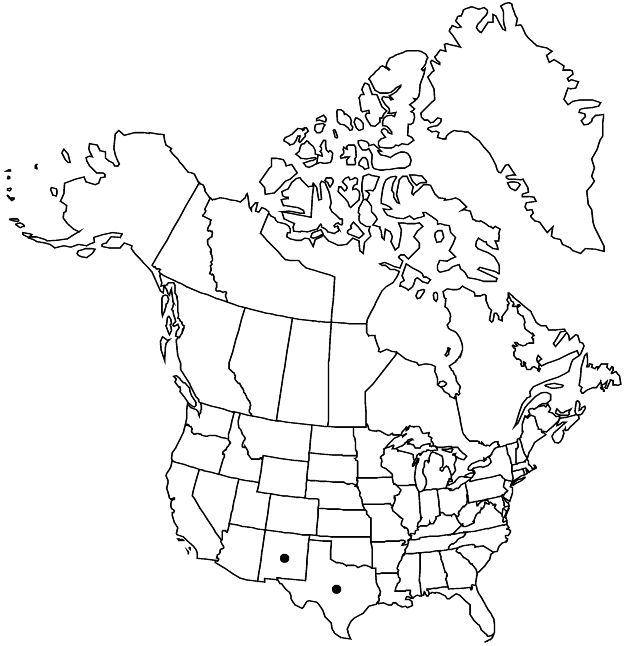Ayenia pilosa
Opera Lilloana 4: 185, fig. 65. 1960.
Subshrubs, decumbent, 0.1–0.2 (–0.3) m. Stems hairy, hairs simple and retrorse, or simple, fasciculate, and stellate. Leaves: petiole 0.5–1 cm; blades of proximal leaves broadly ovate to orbiculate, 0.5–1.3 × 0.5–1.1 cm, distal ovate to oblong-ovate or oblong-lanceolate, unlobed, 0.5–2 (–3.5) × 0.4–1.4 (–1.7) cm, base cordate, margins serrate to doubly serrate, ciliate with 1+ bristles per tooth, apex acute, 3–5-veined from base, surfaces moderately to sparingly hirsute, hairs usually simple, bifurcate, and fasciculate, sometimes also stellate. Cymes axillary, not borne on short-shoots (brachyblasts), (1 or) 2 or 3-flowered; peduncle 2–3 mm. Pedicels 1.5–2 mm. Flowers: sepals persistent, not reflexed at anthesis, ovate, 2 mm, sparingly stellate-hairy abaxially; petal claws 4 mm, lamina rhombic, 1 × 1 mm, base attenuate on claw, margins entire, apex notched, surfaces sparingly hairy abaxially, hairs simple, multicellular, abaxial appendage cylindric to slightly clavate, 0.5 mm; androgynophore 1.5 mm; stamen filaments present; stigmas slightly exserted. Capsules subspheric, 3–3.5 × 3.5 mm, sparingly stellate-hairy, prickles 0.5 mm. Seeds 2–2.5 mm, sparingly tuberculate.
Phenology: Flowering and fruiting year-round.
Habitat: Edges of thickets
Elevation: 600–1200 m
Distribution

N.Mex., Tex., Mexico (Coahuila), Mexico (San Luis Potosí), Mexico (Tamaulipas)
Discussion
Leaf shape and vestiture are the principal characters used to distinguish Ayenia pilosa from A. filiformis. Where they co-occur in southwestern Texas there are intermediates in which the leaves are oblong-ovate as in A. pilosa but the vestiture is more like that of A. filiformis.
Selected References
None.